Artificial intelligence developed for spray drone modified to monitor fields for weeds, disease or even insect infestations
Regina-based Precision AI is having a great year. Last summer, during the Ag In Motion outdoor farm show held near Saskatoon, the company launched its autonomous, fixed-wing drone that uses artificial intelligence to identify and treat individual weeds within a broad-acre-crop canopy. In March, it won numerous international awards for the drone, including the Cooperative […] Read moreTag Archives drone technology

Drones used to assess wildlife crop damage
A pilot project to assess wildlife damage with drones by Agriculture Financial Services Corp. in Alberta’s Peace River district may help document crop damages and assist with timely crop loss assessments. David Tschetter, a farmer, drone operator and photographer with Shady Lane Hutterite Colony at Wanham, Alta., used drone footage on their farm and four […] Read more

Drone revolution waits for regulation update
Spraying is expected to see one of the biggest impacts of the technology, but proponents say federal rules stand in the way
Southeastern Alberta’s history in development of drone technology goes back two decades from developing automated ground vehicles for mine detection to unmanned aerial vehicles for the military developed at CFB Suffield. However, the technology once reserved for those with deep pockets has gone mainstream, according to presenters at a drone industry conference in Medicine Hat. […] Read more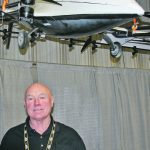
Big drone is a capable spot sprayer
BRANDON — Ag drones took a big leap forward (and upward) with the recent introduction of winged UAVs carrying 45 litres of product that can be precisely applied to a target. Don Campbell had his demo drone suspended from the ceiling above his booth at Manitoba Ag Days. He said the ability to carry and […] Read more
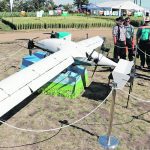
Deere picks companies for collaboration program
Two Canadian companies are among the eight selected by John Deere for its 2023 Startup Collaborators program. Deere started the program in 2019 to help it find innovative agricultural and construction technologies. “We don’t have the market cornered on all the good ideas and we’re always innovating and always listening to what our customers’ needs […] Read more
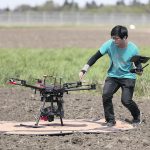
Sask. university offers certificate in precision agriculture
Students who enrol in the program will learn how to precisely manage crops to increase sustainability and production
A new university certificate program, the first in Western Canada, seeks to train students from diverse areas of expertise and backgrounds in precision agriculture. “I think agriculture is rife with opportunities for problem solving,” said Angela Bedard-Haughn, dean of the College of Agriculture and Bioresources at the University of Saskatchewan. “I think it’s that ability […] Read more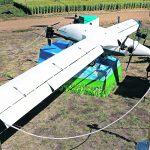
All-hands-on deck approach needed for drone research
Drones are used to apply crop protection products in many countries and Canadian farmers are at a disadvantage because the regulatory framework here is incomplete. There is also a concern that without a path farmers can follow to legally spray their crops with remotely piloted aircraft systems (RPAS) that they will just do it illegally. […] Read more
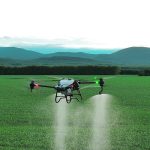
Drone spraying still grounded by rules
Many producers see drones as a lower-cost alternative but a full set of rules are needed before widespread use can occur
Spray drone technology is rapidly evolving, but regulations that allow drones to apply crop protection products are struggling to get off the ground. The Remotely Piloted Aerial Application System (RPAAS) working group was formed to help connect individuals and organizations that are generating the data required to make drone applications legal in Canada. RPAAS held […] Read more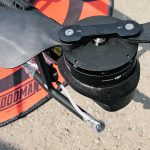
Drone sprayer triples the air power
Crop duster system uses three autonomous drones at a time to spray 1,000 acres a day on broad acre prairie crops
FARGO, N.D. — Most experts have written off using drones for aerial application on broad acre prairie crops. A drone cannot compete with a 1,600 horsepower Air Tractor carrying 800 gallons. A few manufacturers have obtained registrations for orchard-scale spray drones, but government approval for unmanned aerial vehicles (UAVs) with a heavy Air Tractor type […] Read more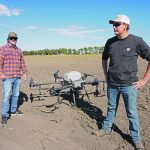
Drone sprayer shines in high-value hort crops
A pumpkin and watermelon grower from southern Minnesota was looking for a way to avoid tire damage to his crops
Bear Bouwman is a commercial pumpkin and watermelon grower in southern Minnesota. His crops need constant protection from pests. Disease, especially, can extract a mighty financial toll. Until this year, Bouwman relied on a conventional ground sprayer, but he didn’t like the tire damage. Crushed vines while spraying insects and weeds resulted in small fruit […] Read more



